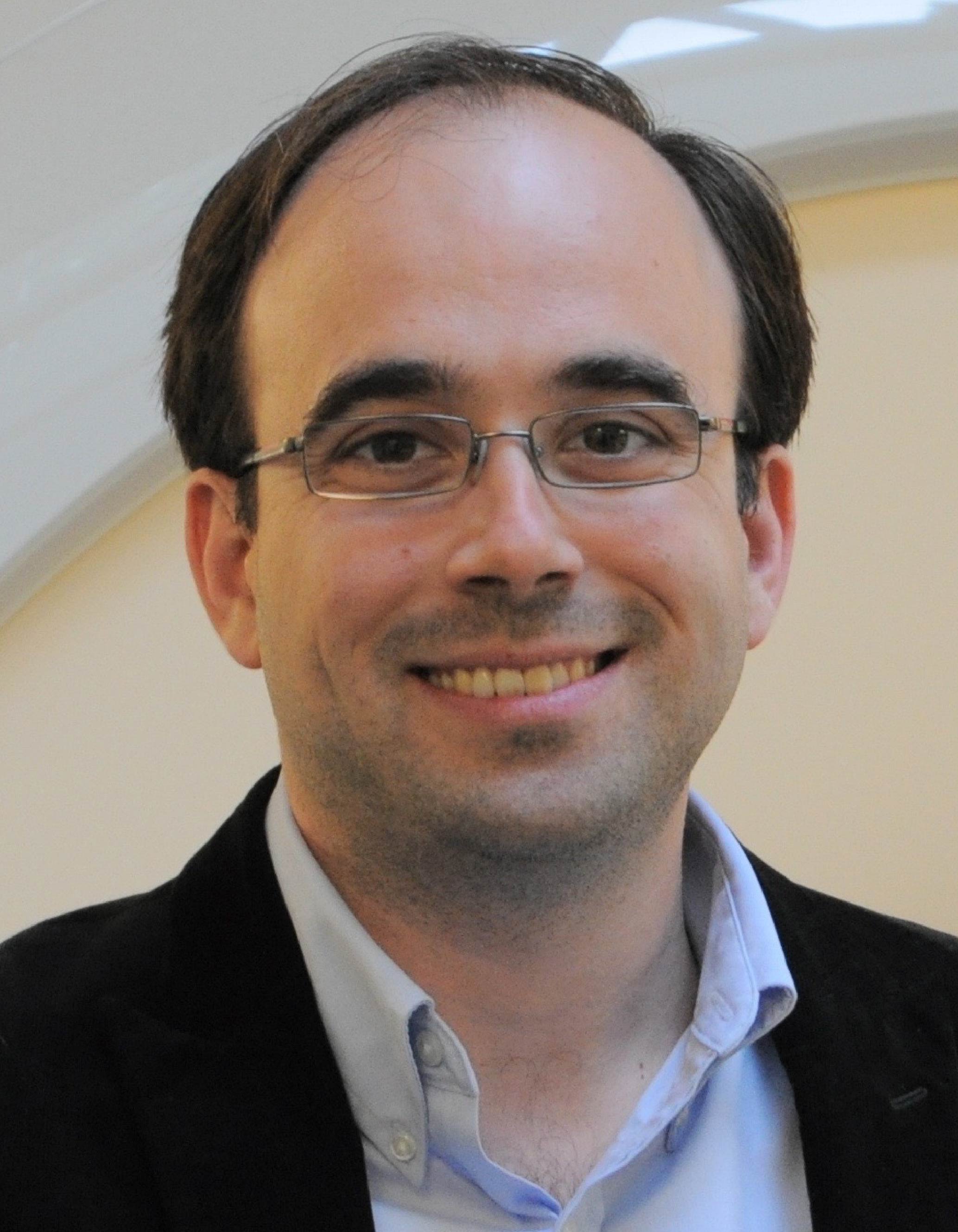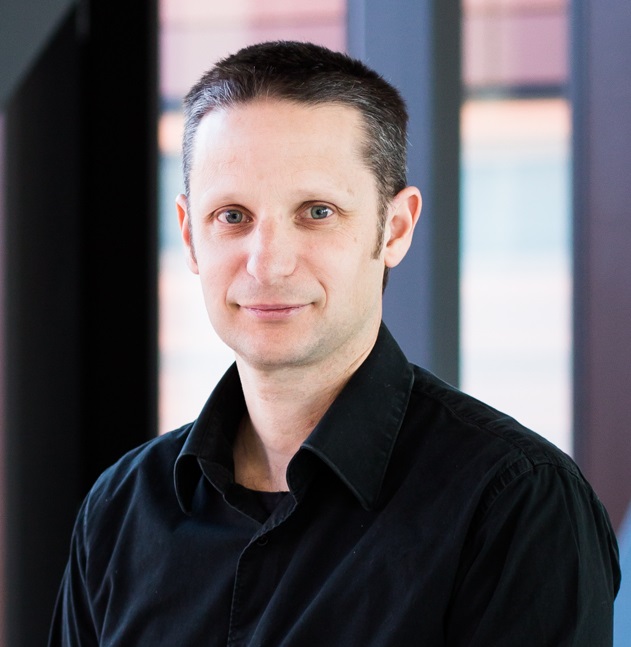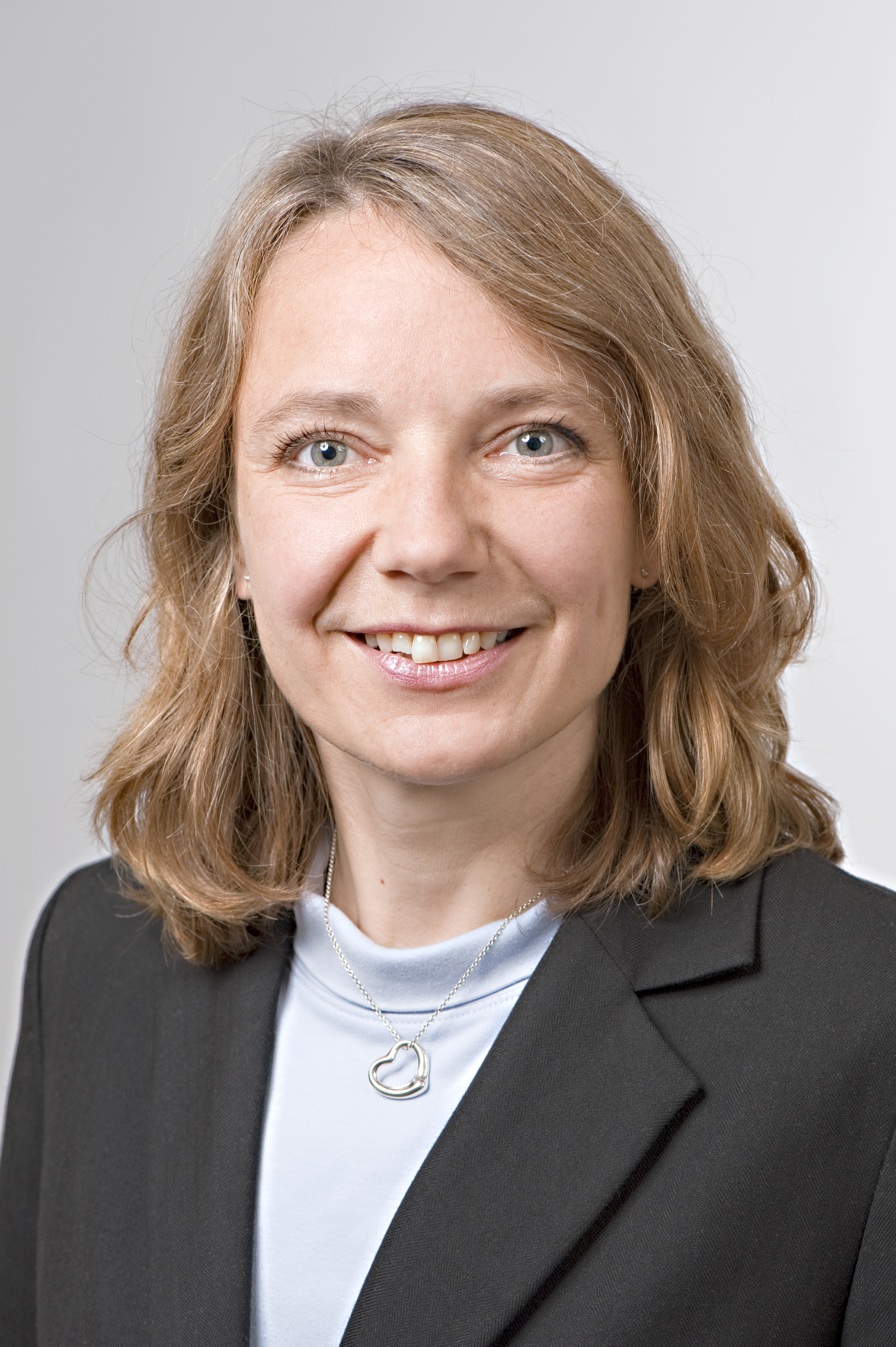Team
Molecular Medicine

Our research strategies focus on technologies for improving vascularisation of tissue in vivo and matrices for tissue regeneration (bone, skin, fat, nerves) in vitro. We have developed different approaches including protein-, cell- and biomaterial based technologies in different animal models, especially in rodents. Clinically, we work on GMP-processes to implement our experimental results into clinical practice with protein- and cell-based protocols, including cell-based gene transfer technologies.
Selected publications:
Rejuvenation Res. in press: Recombinant human erythropoietin plays a pivotal role as a topical stem cell activator to reverse effects of damage to the skin in aging and trauma. Bader A and Machens HG
Handchir Mikrochir Plast Chir. 2010 Mar 10. [Epub ahead of print]: Calvarial Reconstruction by Customized Bioactive Implant. Probst FA, Hutmacher DW, Müller DF, Machens HG, Schantz JT.
Biomaterials. 2009 Oct;30 (30):5918-26. The use of glandular-derived stem cells to improve vascularization in scaffold-mediated dermal regeneration. Egana JT, Danner S, Kremer M, Rapoport DH, Lohmeyer JA, Dye JF, Hopfner U, Lavandero S, Kruse C, Machens HG.
Biomaterials. 2009 Feb;30 (5):789-96. The influence of pancreas-derived stem cells on scaffold based skin regeneration. Salem H, Ciba P, Rapoport DH, Egana JT, Reithmayer K, Kadry M, Machens HG, Kruse C.
J Cell Mol Med. 2010 Mar;14 (3):587-99. Non-viral VEGF(165) gene therapy--magnetofection of acoustically active magnetic lipospheres (magnetobubbles) increases tissue survival in an oversized skin flap model. Holzbach T, Vlaskou D, Neshkova I, Konerding MA, Wörtler K, Mykhaylyk O, Gänsbacher B, Machens HG, Plank C, Giunta RE.
Tissue Eng Part A. 2009 May;15 (5):1191-200. Use of human mesenchymal cells to improve vascularization in a mouse model for scaffold-based dermal regeneration. Egana JT, Fierro FA, Krüger S, Bornhäuser M, Huss R, Lavandero S, Machens HG.
https://www.plastchir.med.tum.de/

Our group focuses on a deeper mechanistic understanding of cancer biology using novel cutting edge genetic engineering, targeting and large-scale genome-wide screening technologies. We are studying the following fundamental biologically and clinically relevant aspects of cancer: how it develops, progresses, spreads to distant sites, and why it becomes resistant to anti-cancer therapies. The translation of new biological understanding into clinically useful diagnostic and therapeutic approaches is a key mission of the lab.
Selected publications:
Mueller S, Engleitner T, Maresch R, ..., Saur D*, Rad R* (2018). Evolutionary routes and KRAS dosage define pancreatic cancer phenotypes. Nature. 554:62-68. *joint senior authors.
Schneider G, Schmidt-Supprian M, Rad R, Saur D (2017). Tissue-specific tumorigenesis – context matters. Nat Rev Cancer. 17:239-253
Maresch R, Mueller S, Veltkamp C, ..., Bradley A, Saur D*, Rad R* (2016). Multiplexed pancreatic genome engineering and cancer in-duction by transfection-based CRISPR/Cas9 delivery in mice. Nat Commun. 7:10770. *joint senior authors.
Rad R, Rad L, Wang W, ..., Liu P, Saur D, Bradley A (2015). A conditional piggyBac transposition system for genetic screening in mice identifies oncogenic networks in pancreatic cancer. Nat Genet. 47:47-56.
Schönhuber N, Seidler B, Schuck K, ..., Schmid RM, Schneider G, Saur D (2014). A next-generation dual-recombinase system for time- and host-specific targeting of pancreatic cancer. Nat Med. 20:1340-7.
Eser S, Reiff N, Messer M, ..., Schmid RM, Schneider G, Saur D (2013). Selective requirement of PI3K/PDK1 signaling for Kras oncogene-driven pancreatic cell plasticity and cancer. Cancer Cell, 23:406-20.
Rad R, Cadiñanos J, ..., Liu P, Saur D*, Bradley A* (2013). A genetic progression model of BrafV600E-induced intestinal tumourigenesis reveals targets for thera-peutic intervention. Cancer Cell. 24:15-29. * equal contribution.
Klein S, Seidler B, Kettenberger A, Sibaev A, Rohn M, Feil R, Allescher HD, Vanderwinden JM, Hofmann F, Schemann M, Rad R, Storr MA, Schmid RM, Schneider G, Saur D. Interstitial cells of Cajal integrate excitatory and inhibitory neurotransmission with intestinal slow-wave activity. Nat Commun. 4:1630.
von Werder A, Seidler B, Schmid RM, Schneider G, Saur D (2012). Production of avian retroviruses and tissue-specific somatic retroviral gene transfer in vivo using the RCAS/TVA system. Nat Protoc. 7:1167-83.
https://exp-cancertherapy.med.tum.de/en

The major research objectives of our laboratory are to understand the molecular mechanisms of pancreatic carcinogenesis and tumor maintenance. We use transgenic and knockout approaches to investigate the role of cancer-relevant mutations in mice.
Our group focuses on the role of reactive oxygen species in chronic inflammation and the link between inflammation and tumor development.
Chronic pancreatitis: Patients suffering from chronic pancreatitis are at increased risk of developing pancreatic cancer. We have established genetic models of chronic pancreatitis. These models are used to investigate the role of inflammation in pancreatic tumor development as well as to test preventive and therapeutic approaches.
Tumor maintenance: Tumor viability is maintained by more genetic alterations than have initially led to tumor development. Identifying these changes will help to understand the cooperative effect of multiple oncogenic changes. Approaches include identification of critical cellular components and characterization of their functions using molecular, cellular and genetic methods.
Selected publications:
Mazur P, Einwächter H, Lee M, Sipos B, Nakhai H, Rad R, Zimber-Strobl U, Strobl L, Radtke F, Kloeppel G, Schmid RM, Siveke J. Notch2 is required for PanIN progression and development of pancreatic ductal adenocarcinoma. PNAS (in press).2010.
von Burstin J, Eser S, Paul MC, Seidler B, Brandl M, Messer M, von Werder A, Schmidt A, Mages J, Pagel P, Schnieke A, Schmid RM, Schneider G, Saur D. E-cadherin regulates metastasis of pancreatic cancer in vivo and is suppressed by a SNAIL/HDAC1/HDAC2 repressor complex. Gastroenterology. 2009 Jul;137(1):361-71
Siveke JT, Lubeseder-Martellato C, Lee M, Mazur PK, Nakhai H, Radtke F, Schmid RM. Notch signaling is required for exo¬crine regeneration after acute pancreatitis. Gastroenterology. 2008 Feb;134(2):544-55.
Siveke JT, Einwächter H, Sipos B, Lubeseder-Martellato C, Klöppel G, Schmid RM. Concomitant pancreatic activation of Kras(G12D) and Tgfa results in cystic papillary neoplasms reminiscent of human IPMN. Cancer Cell. 2007 Sep;12(3):266-79.
Algül H, Treiber M, Lesina M, Nakhai H, Saur D, Geisler F, Pfeifer A, Paxian S, Schmid RM. Pancreas-specific RelA/p65 truncation increases susceptibility of acini to inflammation-associated cell death following cerulein pancreatitis. J Clin Invest. 2007 Jun;117(6):1490-501.
https://www.med2.mri.tum.de/de/team/cv/schmid_cv.php

https://www.med2.mri.tum.de/en/research/ag-schneider.php
Imaging

The goal of our research is to improve individual patient diagnostics and therapy response monitoring in oncology. We employ laboratory model systems and advanced computational methods to develop and validate imaging-derived biomarkers.
Our preclinical work comprises the characterization of advanced tumor models including genetically engineered mouse models and PDX, the development of novel multi-modal imaging techniques (e.g. Magnetic Resonance Spectroscopic Imaging, Phase Contrast Computed Tomography) and the integrated anaylsis of imaging and morphomolecular data.
Our clinical work includes the curation of large, multi-institutional image and clinical data repositiores, the integrated modelling of image data and metadata for the improved non-invasive characterization of tumor heterogeneity and the prediction of individual patient therapy response and survival
Selected publications:
Multiparametric Modelling of Survival in Pancreatic Ductal Adenocarcinoma Using Clinical, Histomorphological, Genetic and Image-Derived Parameters.
Kaissis GA, Jungmann F, Ziegelmayer S, Lohöfer FK, Harder FN, Schlitter AM, Muckenhuber A, Steiger K, Schirren R, Friess H, Schmid R, Weichert W, Makowski MR, Braren RF.
J Clin Med. 2020 Apr 25;9(5):1250. doi: 10.3390/jcm9051250.
Combined DCE-MRI- and FDG-PET enable histopathological grading prediction in a rat model of hepatocellular carcinoma.
Kaissis GA, Lohöfer FK, Hörl M, Heid I, Steiger K, Munoz-Alvarez KA, Schwaiger M, Rummeny EJ, Weichert W, Paprottka P, Braren R.
Eur J Radiol. 2020 Mar;124:108848. doi: 10.1016/j.ejrad.2020.108848. Epub 2020 Jan 23. PMID: 32006931
Co-clinical Assessment of Tumor Cellularity in Pancreatic Cancer.
Heid I, Steiger K, Trajkovic-Arsic M, Settles M, Eßwein MR, Erkan M, Kleeff J, Jäger C, Friess H, Haller B, Steingötter A, Schmid RM, Schwaiger M, Rummeny EJ, Esposito I, Siveke JT, Braren RF.
Clin Cancer Res. 2017 Mar 15;23(6):1461-1470. doi: 10.1158/1078-0432.CCR-15-2432. Epub 2016 Sep 23. PMID: 27663591
https://www.rad.mri.tum.de/ag/braren

Our research focuses on the development of novel Magnetic Resonance Imaging (MRI) acquisition and reconstruction methods with an emphasis on the extraction of quantitative imaging biomarkers. The developed methods are being translated into clinical studies for improving the diagnosis, the therapy monitoring, and the understanding of disease pathophysiology in the diseases of the musculoskeletal system (e.g. osteoporosis, neuropathies, neuromuscular diseases), in metabolic dysfunction (e.g. obesity, diabetes, cachexia) and in body oncology.
Selected publications:
D. Franz, M. N. Diefenbach, F. Treibel, D. Weidlich, J. Syväri, S. Ruschke, M. Wu, C. Holzapfel, T. Drabsch, T. Baum, H. Eggers, E. J. Rummeny, H. Hauner, D. C. Karampinos, Differentiating supraclavicular from gluteal adipose tissue based on simultaneous PDFF and T2* mapping using a 20-echo gradient-echo acquisition, Journal of Magnetic Resonance Imaging, 50:424, 2019
D. Weidlich, J. Honecker, O. Gmach, M. Wu, R. Burgkart, S. Ruschke, D. Franz, B. H. Menze, T. Skurk, H. Hauner, U. Kulozik, D. C. Karampinos, Measuring large lipid droplet sizes by probing restricted lipid diffusion effects with diffusion-weighted MRS at 3T, Magnetic Resonance in Medicine, 81:3427, 2019
M. N. Diefenbach, J. Meineke, S. Ruschke, T. Baum, A. Gersing, D. C. Karampinos, On the sensitivity of quantitative susceptibility mapping for measuring trabecular bone density, Magnetic Resonance in Medicine, 81:1793, 2019
S. Ruschke, H. Kienberger, T. Baum, H. Kooijman, M. Settles, A. Haase, M. Rychlik, E. J. Rummeny, D. C. Karampinos, Diffusion-weighted STEAM MRS to measure fat unsaturation in regions with low proton-density fat fraction, Magnetic Resonance in Medicine, 75:32-41, 2016
B. Cervantes, J. S. Bauer, F. Zibold, H. Kooijman, M. Settles, A. Haase, E. J. Rummeny, K. Wörtler, D. C. Karampinos, Imaging of the lumbar plexus: Optimized refocusing flip angle train design for 3D TSE, Journal of Magnetic Resonance Imaging, 43:789, 2016
C. Cordes*, M. Dieckmeyer, B. Ott, J. Shen, S. Ruschke, M. Settles, C. Eichhorn, J. S. Bauer, H. Kooijman, E. J. Rummeny, T. Skurk, T. Baum, H. Hauner, D. C. Karampinos, MR-detected changes in liver fat, abdominal fat, and vertebral bone marrow fat after a four-week calorie restriction in obese women, Journal of Magnetic Resonance Imaging, 42:1272-1280, 2015

Our Aim:
In multiple sclerosis infiltrating immune cells damage resident cells of the nervous system such as neurons and oligodendrocytes. This structural damage is responsible for the irreversible functional deficits in patients with multiple sclerosis. The aim of our work is to better understand how immune cells cause nervous system damage and use this knowledge to develop novel treatment strategies that limit tissue damage in multiple sclerosis.
Our Approach:
We use in vivo imaging techniques in combination with viral and transgenic labelling to follow in real-time the cellular and molecular interactions that underlie tissue damage in animal models of multiple sclerosis. Based on these insights into the in vivo pathogenesis we then use genetic and pharmacological manipulations to design and evaluate new therapeutic strategies that foster tissue protection and repair.
Selected publications:
Breckwoldt MO et al. Multi-parametric optical analysis of mitochondrial redox signals during neuronal physiology and pathology in vivo. Nature Medicine in press
Romanelli E et al. Cellular, subcellular and functional in vivo labeling of the spinal cord using vital dyes. Nature Protocols 8: 481-90 (2013)
Marinkovic P et al. Axonal transport deficits and degeneration can evolve independently in mouse models of amyotrophic lateral sclerosis. PNAS 109: 4296-301 (2011)
Bishop D et al. NIRB – near infrared branding efficiently correlates light and electron microscopy. Nature Methods 8: 568-70 (2011)
Bareyre FM et al. In vivo imaging reveals a phase-specific role of STAT3 during CNS and PNS axon regeneration. PNAS 108: 6282-7 (2011)
Nikic I et al. A reversible form of axon damage in multiple sclerosis and its animal model. Nature Medicine 17: 495-9 (2011)
Misgeld T et al. Imaging axonal transport of mitochondria in vivo. Nature Methods 4: 559-61
Misgeld T & Kerschensteiner M. In vivo imaging of the diseased nervous system. Nature Reviews Neuroscience 7: 449-463 (2005)
Kerschensteiner M et al. In vivo imaging of axonal degeneration and regeneration in the injured spinal cord. Nature Medicine 11: 572-577 (2005)
Bareyre FM et al. Transgenic tracing of the corticospinal tract: a new tool to study axonal regeneration and remodelling. Nature Medicine 11: 1355-1360 (2005)
http://www.klinikum.uni-muenchen.de/Institut-fuer-Klinische-Neuroimmunologie/de/index.html

Our research investigates alterations in brain structure and function in psychiatric disorders. The focus is on obsessive-compulsive disorder and schizophrenia which are both characterized by structural brain changes and alterations in brain activity and behavior. Patients with schizophrenia suffer from positive symptoms such as hallucinations as well as negative symptoms such as attentional and learning deficits which lead to severe everyday life impairments. Using functional MRI and diffusion tensor imaging (DTI) we try to find out more about the structural and functional correlates of these deficits. We moreover apply multi-modal imaging combining functional MRI, structural MRI and DTI to investigate the association between alterations in white matter structure, gray matter structure as well as functional activation and functional connectivity in patients with obsessive-compulsive disorder. As there is first evidence indicating that the different symptoms or symptom dimensions of the disorder may be mediated by partially distinct neurobiological entities finding out more about symptom-specific functional and structural alterations constitutes another major aim of our research.
www.neurokopfzentrum.med.tum.de/neuroradiologie/forschung_projekt_neuropsychiatrisch.html

One of the focus areas of Prof. Gabriele Multhoff’s research work is the development of innovative cell-, molecule- and antibody-based targeted immunotherapies based on heat shock proteins (SFB824). The aim is to combine these new therapeutic approaches with conventional radiation therapy and chemotherapy. Her current research work has led to a randomized, multicenter clinical phase II study entitled “Targeted NK cell-based adjuvant immunotherapy for the treatment of patients with non-small cell lung carcinoma (NSCLC) after radiochemotherapy” funded by the BMBF. To stratify patients who most likely will benefit from Hsp70-targeting therapies, her group established a novel screening test (lipHsp70 ELISA, patent) to quantify liposomal, tumor-derived Hsp70 and a method to isolate circulating tumor cells (CTCs) after mesenchymal transition in the blood of patients. Liposomal Hsp70 provides a promising biomarker for viable tumor mass in different tumor entities and CTCs in the blood are presently evaluated as valuable tools for prediction of clinical responses and therapy resistance of cancer.
Her research interests also include the application of novel in vivo imaging techniques such as intraoperative, fluorescence molecular tomography (FMT), multispectral optoacoustic tomography (MSOT) and PET/CT in small animals after CT-guided irradiation of tumors using the small animal radiation research platform SARRP (DFG) and the analysis of cellular, molecular biological and immunological mechanisms in tumor and normal cells including primary endothelial cells after exposure to radiation, as well as the development of innovative nanoparticle-based theranostica.
Selected publications:
Chalmin, F., Ladoire, S., Mignot, G., Vincent, J., Bruchard, M., Remy-Martin, J. P., Boireau, W., Rouleau, A., Simon, B., Lanneau, D., De, T. A., Multhoff, G., Hamman, A., Martin, F., Chauffert, B., Solary, E., Zitvogel, L., Garrido, C., Ryffel, B., Borg, C., Apetoh, L., Rebe, C., and Ghiringhelli, F. Membrane-associated Hsp72 from tumor-derived exosomes mediates STAT3-dependent immunosuppressive function of mouse and human myeloid-derived suppressor cells. J. Clin. Invest 120(2): 457-471, 2010.
Stangl S, Varga J, Freysoldt B, Trajkovic-Arsic M, Siveke JT, Greten FR, Ntziachristos V, Multhoff G. Selective in vivo Imaging of syngeneic, spontaneous and xenograft tumors using a novel tumor cell-specific Hsp70 peptide-based probe. Cancer Res 74(23): 6903-6912, 2014.
Stangl S, Tei L, De Rose F, Reder S, Martinelli J, Sievert W, Shevtsov M, Öllinger R, Rad R, Schwaiger M, D`Alessandria C, Multhoff G. Preclinical evaluation of the Hsp70 peptide tracer TPP-PEG24-DFO[89Zr] for tumor-specific PET/CT imaging. Cancer Res 78(21): 6268-628, doi: 10.1158/0008-5472.CAN-18-0707, 2018.
Shevtsov M, Stangl S, Nikolaev B, Yakovleva L, Marchenko Y, Tagaeva R, Sievert W, Pitkin E, Mazur A, Tolstoy P, Galibin O, Ryzhov V, Steiger K, Smirnov O, Khachatryan W, Chester K, Multhoff G. Granzyme B functionalized nanoparticles targeting membrane Hsp70-positive tumors for multimodal cancer theranostics. Small 15(13): e1900205, doi: 10.1002/smll.201900205, 2019.
https://www.translatum.tum.de/en/research-groups/experimental-radiation-oncology-and-radiobiology/
